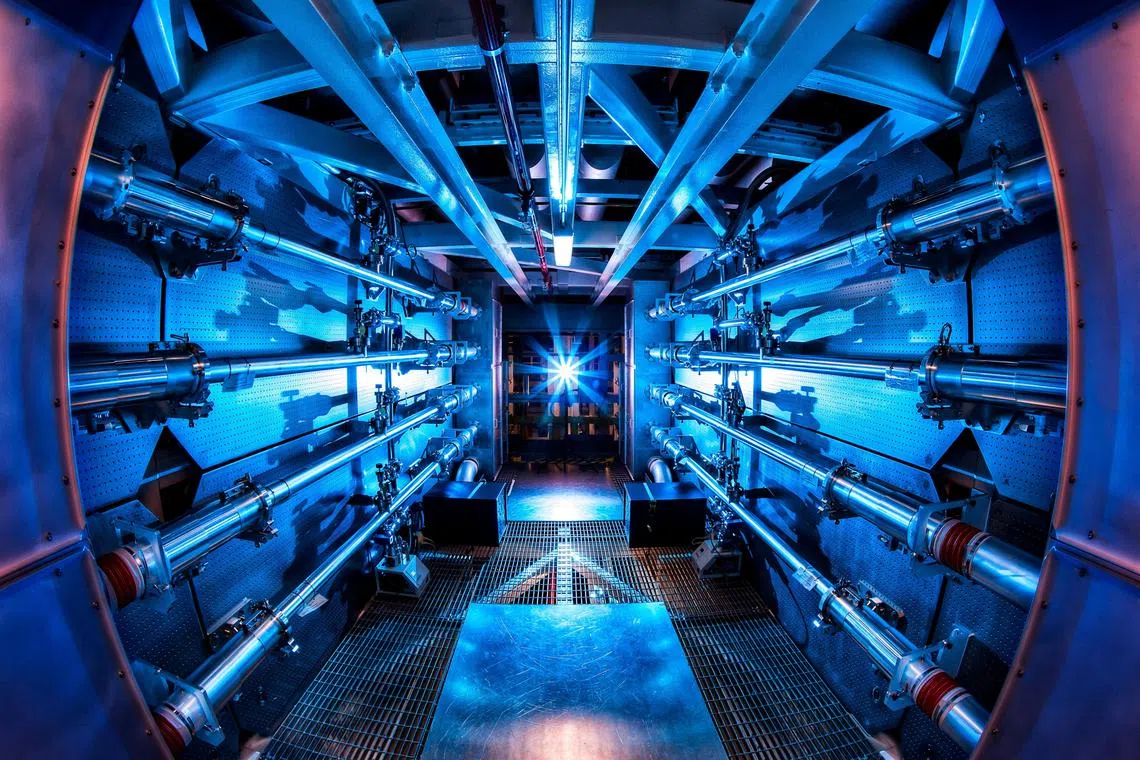US scientists achieve net energy gain for second time in fusion ignition breakthrough
Sign up now: Get ST's newsletters delivered to your inbox

Scientists have known for about a century that fusion powers the sun and have pursued developing fusion on Earth for decades.
PHOTO: REUTERS
Follow topic:
LIVERMORE, California - US scientists have achieved net energy gain in a fusion reaction for the second time since last December, said
Scientists at the California-based lab repeated the fusion ignition breakthrough in an experiment at the National Ignition Facility on July 30 that produced a higher energy yield than in December, said a Lawrence Livermore spokesman.
Final results are still being analysed, the spokesman added.
Lawrence Livermore achieved a net energy gain in a fusion experiment using lasers on Dec 5, 2022. The scientists focused a laser on a target of fuel to fuse two light atoms into a denser one, releasing the energy.
That experiment briefly achieved what is known as fusion ignition by generating 3.15 megajoules of energy output after the laser delivered 2.05 megajoules to the target, the Energy Department said.
In other words, it produced more energy from fusion than the laser energy used to drive it, the department said.
The Energy Department called it “a major scientific breakthrough decades in the making that will pave the way for advancements in national defence and the future of clean power”.
Scientists have known for about a century that fusion powers the sun and have pursued developing fusion on Earth for decades. Such a breakthrough could one day help curb climate change if companies can scale up the technology to a commercial level in the coming decades. REUTERS

